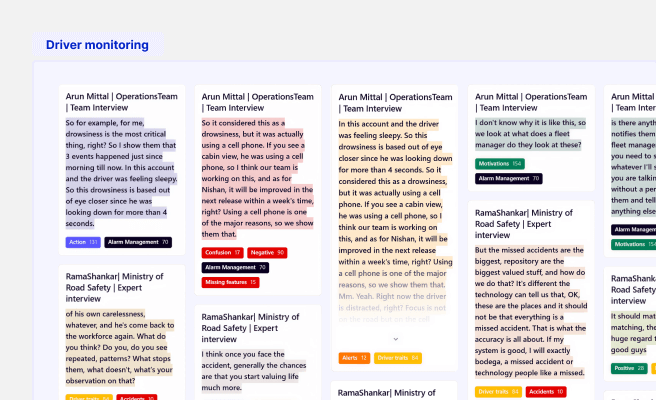Design Sprint
<p>Design Sprints have emerged as a rapid, efficient method for problem-solving, particularly in the digital product space. A Design Sprint is a time-constrained, five-phase process that leverages design thinking to reduce the risk when bringing a new product, service, or feature to the market. Originated at Google Ventures, this methodology allows teams to quickly prototype and test ideas with users, thereby accelerating decision-making and innovation.</p>
<p>Design Sprints are invaluable for climate tech companies aiming to tackle environmental challenges with innovative solutions. By condensing the design and decision-making process into a week, these sprints enable teams to quickly iterate and refine their approaches, making them particularly useful for startups and organizations with limited resources.</p>
<h2 style="color: #333;">Phases of a Design Sprint</h2>
<p>Design Sprints typically unfold over five days, with each day dedicated to a specific phase:</p>
<h3 style="color: #333;">Understand and Map</h3>
<p>The first day focuses on understanding the problem at hand. Teams map out the user journey and gather insights from various stakeholders to define the challenge. This phase is crucial for aligning the team and ensuring everyone is on the same page. For example, a climate tech company may map out the journey of a user trying to monitor their carbon footprint using an app.</p>
<h3 style="color: #333;">Sketch</h3>
<p>On the second day, participants sketch possible solutions. The goal here is to explore a wide range of ideas without the pressure of perfection. This democratizes the ideation process, allowing for diverse input. For instance, team members might sketch different user interface designs for the carbon footprint app.</p>
<h3 style="color: #333;">Decide</h3>
<p>Day three involves making decisions. The team reviews the sketches and decides on the most promising solution to prototype. This phase often includes a voting process to ensure the best ideas move forward. A climate tech startup might decide on the most user-friendly interface that encourages regular app usage.</p>
<h3 style="color: #333;">Prototype</h3>
<p>By the fourth day, the team creates a prototype. This does not have to be a fully functional product but should be realistic enough for testing. Tools like Figma or Sketch can be used to build interactive prototypes quickly. For example, a prototype of the carbon footprint app might include clickable screens to simulate the user experience.</p>
<h3 style="color: #333;">Test</h3>
<p>The final day is dedicated to testing the prototype with real users. Feedback is gathered to understand what works and what doesn’t. This phase is critical for validating assumptions and making necessary adjustments before full-scale development. In the climate tech scenario, testing might involve feedback from users who are environmentally conscious and tech-savvy.</p>
<h2 style="color: #333;">Benefits of Design Sprints</h2>
<p>Design Sprints offer several advantages:</p>
<ul>
<li>Speed: Rapid prototyping and testing help reduce time to market.</li>
<li>Cost-Effective: Identifying issues early can save resources in the long run.</li>
<li>User-Centric: Direct user feedback ensures the product meets real needs.</li>
</ul>
<p>These benefits are particularly crucial for climate tech companies, where speed and user alignment can significantly impact the success of solutions aimed at combating environmental challenges.</p>
<h2 style="color: #333;">Real-World Examples</h2>
<p>One notable example is <a href="https://www.ideo.com/" style="color: #2896FF; text-decoration: underline;">IDEO</a>, a global design company that uses Design Sprints to tackle complex problems, including climate-related projects. Similarly, <a href="https://www.frogdesign.com" style="color: #2896FF; text-decoration: underline;">Frog Design</a> has employed Design Sprints to develop innovative solutions across various industries, including sustainable technology.</p>
<p>Another case is a startup working on a smart irrigation system to reduce water usage in agriculture. By using a Design Sprint, they were able to quickly prototype and test their system with farmers, gaining invaluable insights that shaped their final product.</p>
<h2 style="color: #333;">Conclusion</h2>
<p>Design Sprints are a powerful tool for rapid innovation, making them highly suitable for the dynamic and mission-driven climate tech industry. By following a structured yet flexible approach, teams can efficiently navigate the complexities of product design and development, ensuring their solutions are both effective and user-centered.</p>
<p>Learn more about how to implement Design Sprints in your organization by exploring resources from industry leaders like <a href="https://www.gv.com/sprint/" style="color: #2896FF; text-decoration: underline;">Google Ventures</a> and <a href="https://www.thesprintbook.com/" style="color: #2896FF; text-decoration: underline;">The Sprint Book</a>.</p> <p>To understand the power of design across industries and sectors, view our diverse portfolio of works. <a href="https://www.whatifdesign.co/work" style="color:#2896FF; text-decoration:underline;">View our portfolio</a>.</p> <p>If you’re looking for inspiration to elevate customer and user experience for enterprise-grade products, View our work with the Ministry of Health of Saudi Arabia for curating the UX of an <a href="https://www.whatifdesign.co/work/enterprise-software-for-hospitals" style="color:#2896FF; text-decoration:underline;">Asset Management Tracking Platform</a></p>
<p>Ready to get started? <a href="https://cal.com/akhilak/what-if-design?duration=30" style="color:#2896FF; text-decoration:underline;">Book a 1:1 consultation call</a> with us today.</p>

Let's scale your impact with great design.
Free consultation, no sales pitch
Thank you! Your submission has been received!
Oops! Something went wrong while submitting the form.
Let’s talk
Nothing great is built alone.
Let’s connect about your vision, our work and how we can collaborate.
Get in touch

